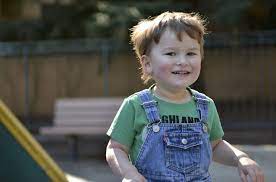Table of Contents

Autism Disorder:
All of the conditions that fall under the umbrella of autism disorders, often known as autism spectrum disorders, are developmental disorders that are characterized by children who have difficulty communicating and interacting with others.
Speech issues are present in some disorders, while motor deficits are present in others. These disorders typically start developing at a young age and have distinct symptoms. Unknown factors account for the majority of autistic disorders.
These illnesses cause odd behaviors and movements in children. They are less socially adept since they struggle to interact with others. They lead to a variety of psychological issues in the kids. Read More
Types of Autism Disorder.
There are five main categories or forms of these disorders.

Autism.
One of its most frequently observed forms of autism disorder. Children in our country lack a flexible outlook on life, are only interested in a small number of subjects, and cannot speak clearly. The behavior of these kids consistently fits a stereotype, as seen by their odd hand movements. They frequently adhere to regulations and exhibit resistance to change.
Autism is a disorder caused by faulty brain development that affects children’s communication abilities and causes unusual behavior. They typically appear in youngsters before the age of four. The condition alters the synapses and nerve cells in the brain, which has an impact on how information is processed there.
Etiology
Genetic and neurological abnormalities are assumed to be the cause of autism. Chromosome anomalies have been observed, despite the fact that the precise reasons remain unknown. Autism causes may also include synaptic dysfunctions.
This disease is brought on by a number of social and environmental variables as well. According to legend, this sickness develops shortly after pregnancy as a result of aberrant brain activities. Around the time of pregnancy, more neurons are discovered, and their activity is also accompanied by altered neural migration.
The functional connection has decreased as a result of the disease in a significant portion of the brain network that is usually involved in processing social and emotional information.
Symptoms and Signs
The children who are afflicted with this illness keep themselves busy and prefer to spend time by themselves. They dislike social interactions of any kind. They may not even speak, communicate primarily through gestures, avoid making eye contact or looking at things directly, move abnormally, and develop attachments to objects.
They are sensitive to pain and have poor senses of smell, hearing, touch, and hearing. They exhibit word repetition and make odd sounds when speaking.
They have a strong memory but no apathy. These kids exhibit repetitive behaviors, have a tendency to follow rules, repeat movements, are prone to injury, exhibit a variable pattern of activity on a regular basis, and are only focused on one item at a time.
Diagnosis for autism.
- Child Autism Rating Scale: This scale measures how severe an autistic child’s behavior is.
- The Autism Diagnostic Observation Schedule uses children’s interaction and observation, as the name suggests.
- Autism can be diagnosed readily with the help of a thorough medical history, certain tests, and examinations.
Treatment for autism.
The main objective for a better life for kids is effective autism treatment. In this situation, educating parents about the disorder is essential so that they may better communicate with their children about such conduct.
Such a child with autism requires ongoing assistance and support. There is no genuine treatment for this disease, however, some medications can be used to treat the symptoms. Antidepressants and neuroleptics are some of these medications.
Such autistic children are capable of autonomous functioning thanks to certain therapies. Which are:
Treatment and education of autistic and related communication:
This method uses images and drawings to help children complete their work independently and in an orderly fashion. Children’s skills are to be improved as a result of this goal.
Applied behavioral analysis:
The goal of this technique is to help the child develop normally. Very often, it is used with extremely young children. The child’s household is typically where this strategy is used.

Asperger Syndrome.
Communication and social interaction issues are also present in this disorder. They do speak normally, but they speak and behave really oddly. They also exhibit a constrained range of object interests. Poor facial expressions are the norm. It appears that this illness runs in families. It is believed to be caused by a number of variables, including genetics. The children who are affected by this disorder have issues with their sleep, including frequent awakenings and trouble falling asleep. These kids were unable to communicate their needs or issues to adults or anybody else.
One of the autism spectrum disorders, Asperger syndrome, causes issues with social interaction and communication. There are delays in the development of critical abilities, such as the inability of a kid with this illness to ride a bike or catch anything thrown. Although youngsters are frequently affected by this disorder, these kids were found to perform some tasks better than autistic people. Compared to girls, boys are more likely to have Asperger syndrome.
Hans Asperger described this disorder, hence the disease bears his name. A youngster with this condition has an odd pattern of interest and repetitive actions. Also, it appears that this syndrome is associated with issues with speaking patterns. Those children lack social engagement, so their speaking patterns are likewise odd. They speak loudly and quickly. Even those subjects that can make people bored can be discussed.
Children with this disease have specific difficulties in nonliteral linguistic areas. As a result, they are incapable of sarcasm, teasing, or comedy. They do, however, still get the jokes and mocking. Also, they have above-average intelligence.
Cause
This syndrome’s precise cause is still unknown. Nonetheless, there are genetic and familial ties to it. It has been discovered that Asperger’s runs in families.
Signs and Symptoms of Asperger Syndrome.
This disease is a spectrum of a wide variety of symptoms. These are:
- Lack of social interaction: Some patients have trouble beginning conversations or making small talk.
- Lack of coordination: These kids have trouble with coordination because of their sloppy motions.
- Communication issues: They consistently have issues with their communication style. Even when speaking, they are unable to create eye contact. They are unable to make the necessary facial expressions.
- These kids tend to become fixated on a small number of topics and show just a minor amount of interest in other things. They only have a narrow range of interests in life.
- Motor abnormalities: These kids have a lot of repeated motor actions. They demonstrate the odd hand and finger motions. In actuality, their whole-body movements are odd.
They have a language barrier that prevents them from using their words, expressions, and speaking properly. They use a tone of voice that makes the other person uninterested in what they are saying.
Diagnosis of Asperger Syndrome.
While there is no precise test to identify this syndrome correctly and precisely, this is also made based on a child’s weird and abnormal behavior and body movements. To accurately assess the condition, a brain exam is required in addition to physiological and blood tests, which are frequently performed.
Treatment of Asperger Syndrome.
Treatment is only based on the symptoms as the cause of this condition is unknown. Depression type of symptoms is successfully treated with the use of antidepressants and neuroleptics. day day day day day case day day day day day day day day day The primary goal of treating this syndrome is to help the children’s cognitive processes and skill development. This can therefore be accomplished by means of many therapies, including talk therapy, occupational therapy, speech therapy, and social skills training. As a result, you must take your kid to see a neurologist, psychologist, and speech therapist.

Childhood Disintegrative Disorder
In this disorder, the child is normal until the age of 3 to 4 years, at which point he suddenly experiences a delay in the process of development. His already accomplished milestones disappear, and he loses his ability to walk and speak normally. These kids also lack crucial abilities for communication and social engagement.
The term “childhood disintegrative disorder” refers to a range of motor and social skill delays. In children, this disease typically first manifests itself at age 3, on average. Heller Syndrome is the alternate name for this disorder, which causes total social, linguistic, and communicative impairment. Up until a certain age, children here develop normally, but dramatic changes then start happening, and they entirely lose their social and communicative skills. This disorder shares characteristics with autism and is a kind of both pervasive developmental disorder and autistic disorder.
Cause
There is no known etiology for this condition. The nerve system and brain appear to be normal. This disorder is linked to a number of diseases, including subacute sclerosing panencephalitis, which develops when measles infection persists in the brain for an extended period of time, causing inflammation within the brain and the death of brain and nerve cells. Tuberous sclerosis is another disease that is linked to this disorder and is characterized by the growth of tumors in a variety of body organs.
Symptoms and Signs.
Children can listen, comprehend, and express themselves verbally up until a certain age, at which point these abilities start to decline. The child loses motor skills, is unable to converse or maintain a conversation, is unable to play actively or at all, and at school displays no interest in his classmates, making it impossible for him to establish healthy relationships with them.
He loses a lot of his abilities, and even this disorder causes him to lose control over how much urine and excrement he excretes. He exhibits movement that continuously repeats.
Diagnosis
Despite the fact that there is no test that can accurately diagnose this illness. However in this case, the loss of a previously attained milestone is seen to be a diagnostic tool for this condition. If he has already lost three of them, this disorder will be deemed to be diagnosed.
To determine if there are any other diseases or hormonal imbalances causing these symptoms, certain testing like blood and urine tests are carried out. One can perform an MRI.
Treatment.
As these two conditions are related, the course of treatment is the same as for autism. It is accomplished by combining pharmaceutical intervention with a few key treatments.
Since no such treatment has yet been developed, using medicine to treat this childhood disintegrative illness is not beneficial. Nonetheless, some medications offer symptom alleviation, and this is accomplished by the administration of neuroleptics and anticonvulsant medications.
While the anticonvulsant successfully manages the child’s seizure complaints, neuroleptics are utilized to control the child’s irritable, psychotic, and violent behavior.

Rett’s Syndrome.
The grey matter, which is present in the brain, does not develop properly with this condition. A variety of symptoms are caused by this. Fits, social withdrawal, panic attacks, issues with balance and coordination, loss of speech, numerous sensory issues, and hypotonia and ataxia may be present in these kids. The MECP2 gene’s mutation is the cause of this disorder.
Diagnosis.
The different symptoms and full histories of all varieties of autism spectrum disorders are used to make the diagnosis. Any additional disorder of the brain can be examined with MRI. Yet, a diagnostic test is not readily available.
Treatment.
Therapies including behavioral treatment, speech therapy, or occupational therapy are frequently used to treat this condition. These treatments help the youngster operate independently and behave well. Medication is used to address other symptoms of the disorders.

Pervasive Developmental Disorder.
The inability of the kids to interact and communicate is what defines this. Around the age of two to three years, this condition first appears. These kids don’t speak to each other out loud since they find the language hard to understand. They exhibit a variety of repetitive movements and movement abnormalities.
The problem in the growth of the brain’s critical social and communicative skills is known as a pervasive developmental disorder. These crucial human tools have been delayed as a result of a brain malfunction. With this condition, there is also a noticeable delay in both cognitive and behavioral development. Such youngsters continue to be perplexed and are unable to comprehend their surroundings. This disorder’s origin is still a mystery.
various forms.
This developmental condition comes in five main forms:
- Autism.
- Childhood Disintegrative Disorder.
- Rett’s Syndrome.
- Asperger Syndrome.
- Unspecified Pervasive Developmental Disorder.
Symptoms and Signs.
- These kids find it impossible to avoid eye contact.
- They are unable to use the language because they do not grasp it.
- Show little interest in anything, and they do not exhibit these traits like a typical child who explores the world.
- Some kids exhibit unusual hand movements, such as tapping, flapping, or spinning motions.
- They struggle when dealing with people, making it difficult for them to interact and communicate effectively.
- The progression of developmental milestones slows down, and those that have already been reached are lost.
- These kids have a hard time connecting with various people, things, or even events.
- They merely engage in strange play with the toys and other items.
- Difficulty falling asleep as well as difficulties staying asleep.
- Aggressive and irritative behavior.
Diagnosis.
It is solely created using the disease’s symptoms. Such a test does not exist to diagnose the pervasive developmental disability. Brain conditions can be examined with an MRI to rule out other diseases. To make an accurate diagnosis and rule out other differential diagnoses, specific biochemical tests are typically performed.
Treatment.
The widespread developmental condition is incurable. Children should get specific behavioral, linguistic, and physical therapy so that their behavior might potentially improve. Symptomatic alleviation can be achieved through pharmaceutical intervention. Read More
Disclaimer :
This content is accurate and true to the best of the author’s knowledge and does not substitute for diagnosis, prognosis, treatment, prescription, and/or dietary advice from a licensed health professional. Drugs, supplements, and natural remedies may have dangerous side effects. If pregnant or nursing, consult with a qualified
provider on an individual basis. Seek immediate help if you are experiencing a medical emergency.